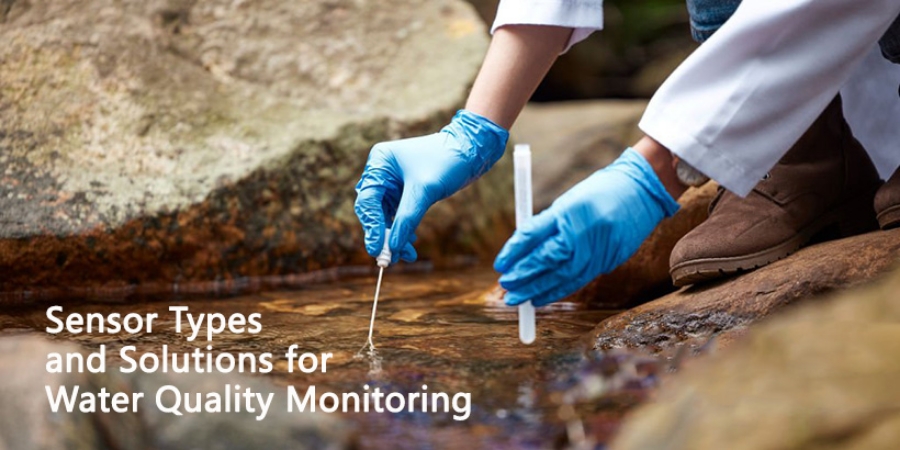
The water environment affects the living standards of human beings to a certain extent, and the quality of water directly affects human health. In recent years, sensors have been rapidly developed and applied in water pollution monitoring. They are key tools for real-time monitoring of the physical, chemical and biological properties of water. They can accurately detect parameters such as pH, conductivity, turbidity, salinity and water leakage, and are widely used in industrial wastewater treatment, environmental protection, aquaculture, municipal water supply monitoring and smart building water management. This article will comprehensively introduce the common types of water quality sensors, typical application scenarios, and recommended products and solutions.
Why is water quality monitoring inseparable from a variety of sensors?
The water environment has complex components and is greatly affected by natural changes and human intervention. To achieve a comprehensive grasp of water quality, parameter detection must be carried out from multiple dimensions. Various sensors perform their respective functions and work together to build a complete monitoring system:
- pH value: measures the acidity and alkalinity of water, and is an important basis for judging whether the water quality is suitable for biological survival or industrial treatment.
- Conductivity/salinity: reflects the concentration of dissolved ions in water, which can be used to evaluate the purity of water quality and the content of pollutants.
- Turbidity: indicates the concentration of suspended particles in water, and is a key indicator of whether the water body is turbid.
- Water leakage detection: mainly used for leakage monitoring in buildings, pipelines and other locations to avoid waste of resources and damage to facilities.
- Multi-parameter sensing module: integrated design, convenient for simultaneous collection of multiple water quality indicators, suitable for systematic deployment.
The combination of different sensors can effectively improve the comprehensiveness and reliability of data, and is an indispensable infrastructure for modern water quality monitoring.
Main Sensor Types
Conductivity Sensor
Conductivity sensors detect the electrical conductivity of water, which correlates with the total ion concentration. Commonly used in pollution monitoring, industrial effluent detection, and hydroponics, these sensors provide early warnings of contamination and mineral content variations. Models with temperature compensation and rugged design ensure accuracy and durability in the field.

Salinity Sensor
Salinity sensors measure the salt concentration in water, particularly useful in marine aquaculture, desalination systems, and estuarine studies. They are typically derived from conductivity measurements, with temperature compensation for accurate readings in varying environments.
pH Sensor / pH Electrode
pH sensors measure the hydrogen ion concentration in water and are essential for determining acidity or alkalinity. Widely used in wastewater treatment, aquaculture, and industrial processes, pH sensors are available in gel-filled, glass, and solid-state types with analog or digital outputs. They offer stable, long-term measurements in both freshwater and saltwater environments.
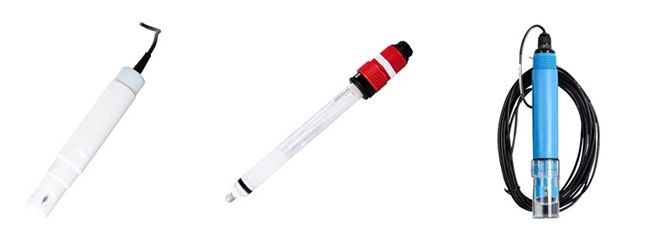
Turbidity Sensor
Turbidity sensors assess the optical clarity of water by measuring light scattering caused by suspended solids. These sensors are vital in drinking water treatment, river monitoring, and environmental compliance. They use infrared or laser technology for high-precision, low-maintenance monitoring.
Water Quality Sensor
Multi-parameter water quality sensors combine measurements like pH, turbidity, DO (dissolved oxygen), conductivity, and temperature into one module. Suitable for remote stations, water tanks, and environmental monitoring systems, they simplify deployment and reduce integration complexity.
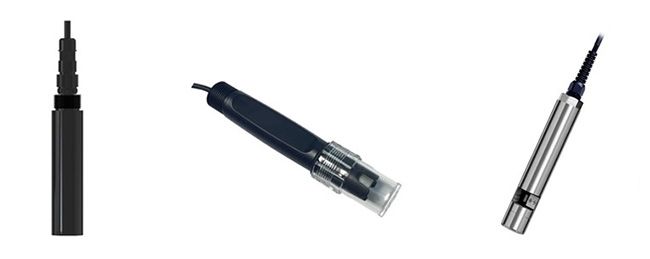
Water Leakage Sensor
Water leakage sensors detect the presence of water in unintended areas, such as under floors, near pipelines, or inside equipment enclosures. Using resistive or capacitive sensing, these sensors trigger alarms or control systems, preventing property damage and system failures.
Recommended Sensors Display
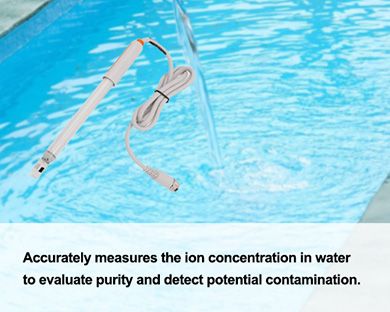 |
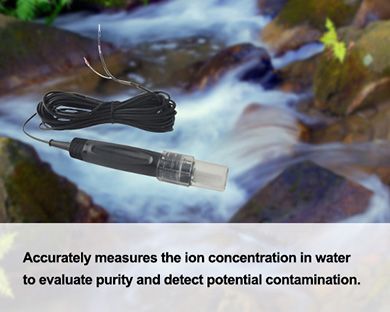 |
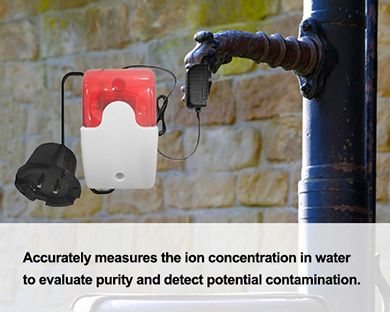 |
| Conductivity Sensor | pH Electrode | Water Leakage Sensor |
Recommendation reasons
Conductivity sensors can measure the total ion concentration in water in real time and are key indicators for judging water purity and pollution. They are widely used in scenarios such as industrial wastewater discharge, water environment monitoring, and tap water quality management. They have fast response speed and high stability, and are suitable for long-term online monitoring and automated control systems.
pH electrodes are indispensable basic sensors in water quality analysis. They can accurately reflect the acidity and alkalinity of water and help determine whether the water body is within the appropriate ecological or emission standard range. They are suitable for aquaculture water bodies, industrial drainage, laboratory testing and other application scenarios. They are highly sensitive, easy to calibrate, and support long-term stable operation.
Water leakage sensors are suitable for underground pipe networks, equipment rooms, building waterproofing and other scenarios. They can quickly alarm for trace water leakage and effectively prevent water damage accidents. The sensor is compact in design and sensitive in response. It is compatible with IoT platforms such as NB-IoT and Lora, and is an indispensable security sensing component for smart cities and smart buildings.
Typical Industry Application Solutions
Urban Pipeline Monitoring and Water Leakage Alert System
As urban underground pipeline networks age and grow more complex, issues such as leakage, corrosion, and water quality fluctuations occur more frequently. These problems not only waste valuable water resources but also pose risks to public health and urban water supply safety. Building an intelligent urban water monitoring system enables real-time tracking of water quality and pipeline status, greatly enhancing refined water management.
Recommended Sensors:
- Water Leakage Sensor
- Conductivity Sensor
- pH Sensor
- Temperature Sensor (optional)
| Sensor | Function Description |
| Water Leakage Sensor | Detects leakage in pipelines or underground channels for early warning |
| Conductivity Sensor | Measures ion concentration to assess water purity and contamination |
| pH Sensor | Monitors water acidity/alkalinity to predict corrosion risks |
| Temperature Sensor | Provides compensation data and supports water quality trend analysis |
Solution Suggestion: Sensors can be connected to municipal water platforms via NB-IoT, Lora, or RS485 communication for automatic alerts, leak point localization, and water quality trend monitoring. It is recommended to use IP68-rated sensors for harsh, high-pressure underground environments.
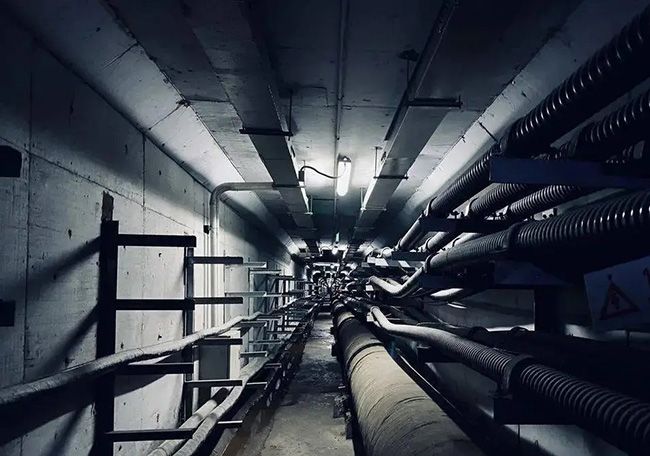
Smart Aquaculture Water Quality Monitoring
In aquaculture, stable water quality is crucial for the health and growth of aquatic organisms. Deploying multiple water quality sensors enables continuous monitoring of the aquatic environment, helping to improve productivity, reduce disease risk, and achieve automated water management.
Recommended Sensors:
- pH Sensor / Electrode
- Salinity Sensor
- Turbidity Sensor
- Temperature Sensor
| Sensor | Function Description |
| pH Sensor | Tracks water pH levels to prevent stress or death in aquatic species |
| Salinity Sensor | Measures salinity, suitable for seawater or brackish water aquaculture |
| Turbidity Sensor | Detects suspended solids to assess water clarity |
| Temperature Sensor | Controls water temperature, supports feeding and environmental adjustments |
Solution Suggestion: Use floating-type sensor nodes with wireless communication and solar power to build a 24/7 monitoring network. This system can be linked to oxygenators and water valves for automated environmental control in aquaculture.
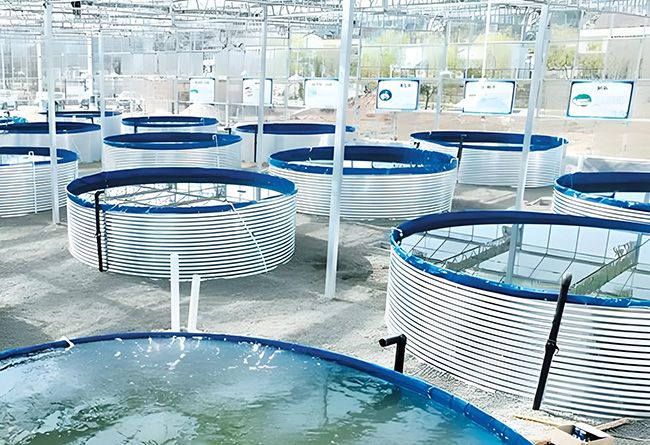
Industrial Wastewater Discharge Monitoring System
Industrial wastewater, if untreated, can cause significant environmental damage. An online water quality monitoring system allows real-time tracking of wastewater discharge, helping enterprises meet discharge standards, comply with regulations, and reduce ecological risks.
Recommended Sensors:
- pH Sensor / Electrode
- Conductivity Sensor
- Turbidity Sensor
- Multi-parameter Water Quality Sensor
| Sensor | Function Description |
| pH Sensor | Monitors wastewater acidity/alkalinity to detect over-limit discharge |
| Conductivity Sensor | Measures dissolved contaminants to evaluate pollution levels |
| Turbidity Sensor | Assesses suspended solids concentration to evaluate treatment efficiency |
| Multi-parameter Sensor | Integrates various measurements to enhance monitoring accuracy and simplify deployment |
Solution Suggestion: Install sensors at discharge outlets or sedimentation tanks and connect them to a cloud platform for remote management and historical data logging. Industrial-grade sensors with corrosion-resistant materials and automatic cleaning are recommended for long-term stability.
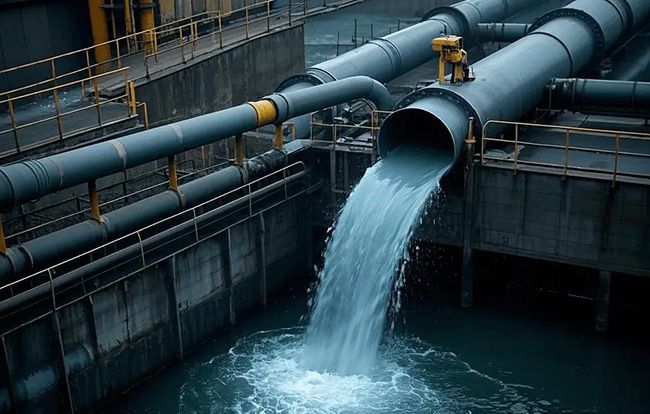
Smart Water Management and Regional Water Environment Monitoring
Natural water bodies such as rivers, lakes, and reservoirs are influenced by complex environmental factors and require long-term water quality tracking. By integrating multi-parameter sensors and IoT platforms, a smart water management system enables real-time insight, scientific supervision, and visualized environmental data.
Recommended Sensors:
- Water Quality Sensor (Multi-parameter)
- Salinity Sensor
- pH Sensor
- Conductivity Sensor
| Sensor | Function Description |
| Multi-parameter Sensor | Monitors multiple key indicators in one device to simplify deployment |
| Salinity Sensor | Detects salinity changes in estuaries and inland lakes |
| pH Sensor | Indicates water acidity/alkalinity, assists in pollution tracing |
| Conductivity Sensor | Tracks long-term ion concentration trends for modeling and analysis |
Solution Suggestion: Deploy floating buoy stations equipped with solar power and 4G/NB-IoT modules for continuous water quality monitoring. Integrate data with weather, water level, and flow metrics for multi-dimensional ecological evaluation and real-time response.

Water quality sensors are indispensable in achieving intelligent, safe, and efficient water management. Whether you are working on environmental protection, agricultural water conservation, or industrial discharge control, Such Online Shop offers robust sensor products and expert consultation services to empower your solution. With reliable sensing, modular integration, and IoT connectivity, you can build a real-time and intelligent water monitoring network fit for the future.
